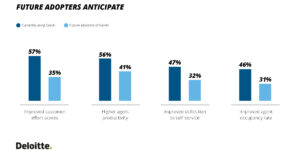Ohio employers are collectively owed $860 million after being overcharged for nearly a decade by the state insurance fund for injured workers, a Cleveland judge ruled Wednesday.
Cuyahoga County Common Pleas Judge Richard McMonagle’s decision involving the Ohio Bureau of Workers’ Compensation affects about 270,000 mostly small-business owners, many unaware they are covered by the class action. His order rejected the state’s arguments for paying a smaller amount.
The lawsuit, which began in 2007, said the bureau gave discounted premiums to companies that joined group insurance plans and charged companies not in the groups excessive rates to pay for the discounts.
McMonagle ruled in December in favor of business owners who didn’t participate in the group rating program, agreeing they had been charged unfair premiums from July 2001 to June 2009.
Lawyers for the businesses argued companies paying group rates were not charged premiums that covered their losses, which forced the other companies to cover the difference. The bureau discounted its group plans as high as 90 percent.
A new fee structure took effect in July 2009, after McMonagle ordered the bureau to change its system for setting premiums for injury insurance. The maximum discount set by the bureau for group plans is 53 percent.
The amount employers are owed in overcharges has been a matter of dispute. Employers suing Ohio in 2007 originally asked for $1.3 billion, which included interest on the amount claimed, but McMonagle asked them to revise the figure downward after declining to award the interest.
During an evidentiary hearing last week, the state argued the employers did not suffer any harm that entitles them to restitution.
Spokeswoman Melissa Vince said the bureau spent $861 million more in claims costs and expenses for the affected companies during the disputed period than they paid in premiums _ even as the fund’s net assets shrunk. For every dollar in premiums paid, affected businesses had $1.26 in claims costs, she said.
McMonagle ultimately rejected the bureau’s arguments.
“The court finds that the figure submitted by the plaintiffs was calculated accurately,” he wrote. He set aside new actuarial arguments made by the bureau during last week’s hearing.
The employers’ organization Pay Us Back Ohio BWC has set up an informational website, www.PayNowBWC.com, with an employer search feature. Protesters affiliated with the group had packed McMonagle’s courtroom last week as a sign of their concern.
Vince said the Bureau is disappointed and plans to appeal, which means immediate reimbursements aren’t likely.
“We maintain our actions were lawful and restitution is not warranted in this case,” she said.
James DeRoche, a Cleveland attorney for the business owners, said the plaintiffs are thrilled that justice has prevailed regarding the excessive rates, but compensation is the key.
“Now is the time for the BWC to do the right thing and immediately reimburse these businesses,” he said. “If the BWC is truly business-friendly it will not further delay payment so tens of thousands of small businesses can reinvest those dollars into creating and protecting Ohio jobs.”
Vince said the money for payouts would come from a surplus of held by the $24.5 billion insurance fund for injured workers. It’s estimated at about $8 billion, according to the latest annual report.
The pooled policies and premiums were managed by third party administrators, generally very large companies, that approached groups such as the Ohio Chamber of Commerce and various professional associations to offer the group policies.
Companies that had claims due to employee injuries were kicked out of the groups and then charged higher premium rates while group members paid the lower rates.
In a 2007 letter, BWC then-Administrator Marsha Ryan wrote that in 2006, 6,700 employers saw their premiums increase by an average of 697 percent after they were kicked out of the group. About 31 percent of those employers either canceled their workers’ compensation insurance or filed for bankruptcy.


















